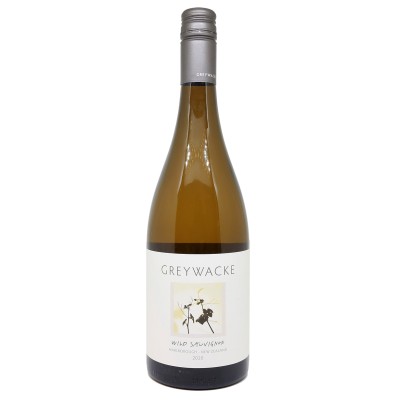Greywacke - Wild Sauvignon Blanc 2020
Greywacke is located in Marlborough , New Zealand . Kevin Judd is one of Marlborough's pioneering winemakers whose career is intrinsically linked to the global profile of New Zealand wine. Kevin Judd was born in England and raised in Australia, where he studied winemaking at Roseworthy College and first made wine in Reynella in South Australia. He moved to New Zealand in 1983 and joined Selaks Wines. He subsequently became the founding winemaker of Cloudy Bay, a pivotal role during which he helmed the company's first 25 vintages. In 2009, he created his own label: Greywacke, named after the prolific rock from New Zealand. Richard Ellis , born in Wellington and raised in Auckland, moved to the South Island in 2000 to study viticulture and enology at the University of Lincoln. After graduating, he joined Pernod Ricard as an assistant winemaker based mainly in Auckland. In mid-2007, he decided to broaden his winemaking experience by working consecutive harvests in alternating hemispheres. The first stop was France at Château de Pennautier (Languedoc), returning to New Zealand with Ata Rangi for the 2008 vintage, to the United States with Stoller Winery in Oregon and finishing at Tamar Ridge in Tasmania. He joined Greywacke for the 2014 crop in Marlborough and then spent the rest of the year in London representing Greywacke in the UK. He has now relocated permanently to Marlborough as an integral part of the Greywacke team.
The Sauvignon Blanc grapes are sourced from several vineyards in the southern valleys and central Wairau plains, particularly in Woodbourne, Renwick and Rapaura. Soils vary from young alluvial deposits of Rapaura and Renwick, which contain high proportions of greywacke riverstone, to the older, denser clay loams of the southern valleys. Some vineyards were harvested by machine and others by hand, then the harvest was put into direct pressing. The juice obtained was cold settled before being drawn into old French oak barrels . Fermentation occurred spontaneously with native yeasts, the lees were stirred occasionally, and approximately two-thirds of the wine underwent malolactic fermentation. It was transferred to oak barrels and aged on lees for 8 months .
Grape variety: 100% Sauvignon Blanc
























